The document discusses different types of instructions and addressing modes in assembly language. It explains that instructions tell the CPU to perform operations and can contain data. The main types of instructions are data movement, arithmetic/logical, program control, and I/O instructions. It then discusses the different addressing modes which specify how operands are accessed, including register, immediate, direct, indirect, relative, indexed, and based indexed addressing modes. It also provides examples of taking input and output in assembly language using interrupts.
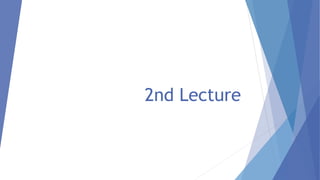

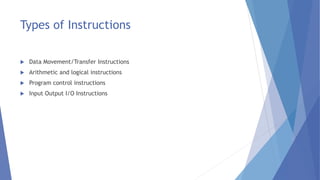
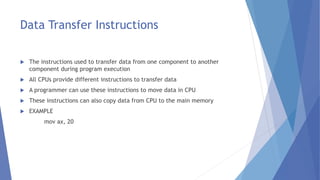
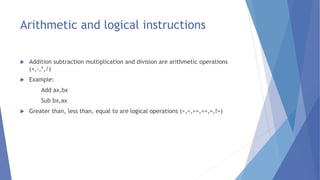




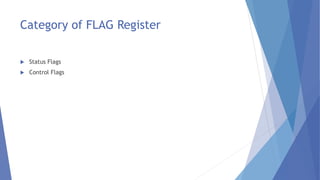
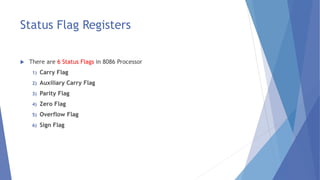
























![Direct Addressing Mode
Loads or stores the data from memory to register
The instruction consists of a register and offset address
Example
MOV AX, [ADDRESS]](https://image.slidesharecdn.com/assemblylanguage-220723024058-3168509a/85/Assembly-language-pptx-36-320.jpg)
![Register Indirect Addressing Mode
The register indirect addressing mode uses the offset address which resides in
one of these registers i.e. BX,SI,DI.
The instruction consists of a register and offset address
Example
MOV AX, [ADDRESS]](https://image.slidesharecdn.com/assemblylanguage-220723024058-3168509a/85/Assembly-language-pptx-37-320.jpg)
![Based Relative Addressing Mode
This addressing mode uses a base register either BX or BP and a displacement
value to calculate physical address
Physical Address = Segment Register (Shifted to left by 1) + Effective address
Example
MOV [AX+4], BX](https://image.slidesharecdn.com/assemblylanguage-220723024058-3168509a/85/Assembly-language-pptx-38-320.jpg)
![Indexed Relative Addressing Mode
This addressing mode is same as the based relative addressing mode
The only difference is it uses DI and SI registers instead of BX and BP registers
Example
MOV [DI]+12, BX](https://image.slidesharecdn.com/assemblylanguage-220723024058-3168509a/85/Assembly-language-pptx-39-320.jpg)
![Based Indexed Addressing Mode
The based indexed addressing mode is actually a combination of based
relative addressing mode and indexed relative addressing mode
It uses one base register (BX,BP) and one index register (SI,DI)
Example
MOV AX,[BX+SI+10]](https://image.slidesharecdn.com/assemblylanguage-220723024058-3168509a/85/Assembly-language-pptx-40-320.jpg)
